cse15l-lab-reports
CSE 15L Lab 1
Charvi Shukla
cshukla@ucsd.edu
Introduction
Hello there! Welcome to my Lab report 1 for CSE 15L. This page contains tutorials on:
- Installing VS code
- Remotely Connecting
- Trying Some Commands
- Moving Files with scp
- Setting an SSH Key
- Optimizing Remote Running
Installing Vscode
This tutorial assumes that you have a java (13 or newer) already installed on your machine.
Step 1: Go on this link and click the Mac Download button

Step 2: Open the file and keep following the instructions that the system prompts.
Step 3: Open VS code.
Step 4: Open up command palette (Shift + Command + P), or click view –> Command Palette from the top bar.
Step 5. Type “Install ‘Code’ command in PATH.” Then hit enter. Step 6. Open terminal and type:
$ code <filename>.java
So, you can say for instance type:
$ code HelloWorld.java
Step 7: Open VS code, go on terminal. Atlernatively, you can also type in the terminal:
$ code
Step 8: Click File > New File
Step 9: Type the following code into your file and hit Command + S:
class HelloWorld{
public static void main(String[] args){
System.out.println("Hello world!");
}
}
Step 10: Open terminal and type
$ javac HelloWorld.java
$ java HelloWorld
Troubleshooting
If your mac not let you open the file since you downloaded it from the internet, you would need to allow the .dmg file to be able to open. To troubleshoot this problem, do the following:
- Go on System Preferences.
- Click Security and Privacy.
- Click the little lock symbol at the bottom and enter your mac password.
- Allow downloads from “App store and identified developers”
- Try opening the file
Remotely Connecting
Step 1: Open Terminal
Step 2: make sure you are in your home directory
Step 3: Type out the following command in the terminal
$ <your account name>@ieng6.ucsd.edu
Step 4: Enter your password (if you have one)
Step 5: Hit enter. You should be able to see something like this:
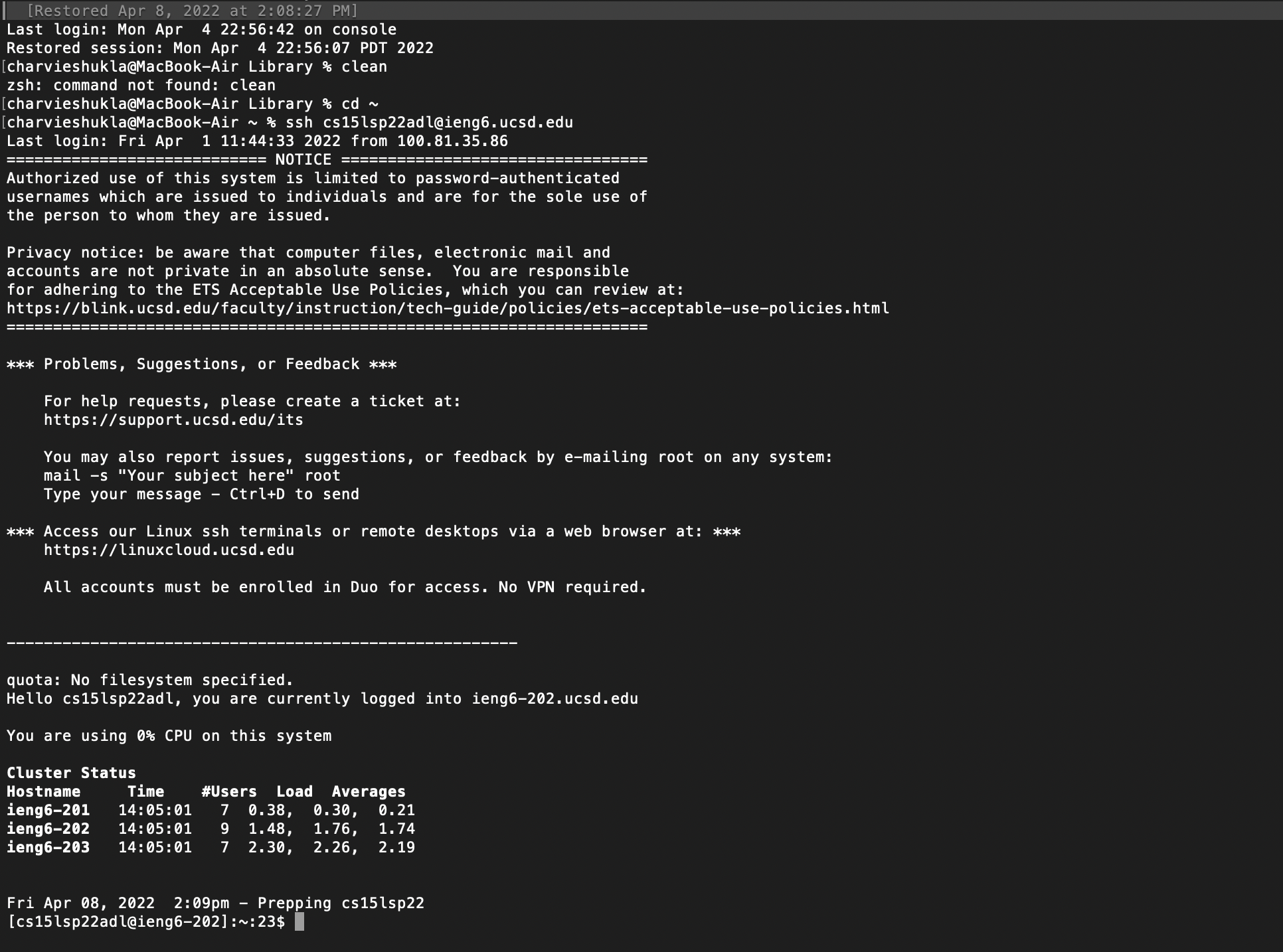
You are now conneced remotely!
Trying some commands
cd: change directory
This command changes the directory from the one you are in to a different one so that you can execute other commands on a different directory and perform various functions such as viewing the contents of a different directory or opening a file in a different directory
ls: list files
This command enables you to see all the files or directories contained in the directory you are currently in.
pwd: print working directory
This command gives you your current exact location on the computer
mkdir: make directory
This command allows the user to create a directory (or in other words, a folder) in the directory you are currently in.
rm: remove
Remove or rm is a prefix that you can use with other terms to delete a file or even a whole directory. This is an irreversible command.
touch: create a file
Touch can essentially allow you to make any type of file, but it is initially empty. This blank file can then be opened in a tet editor.
man: display command manual
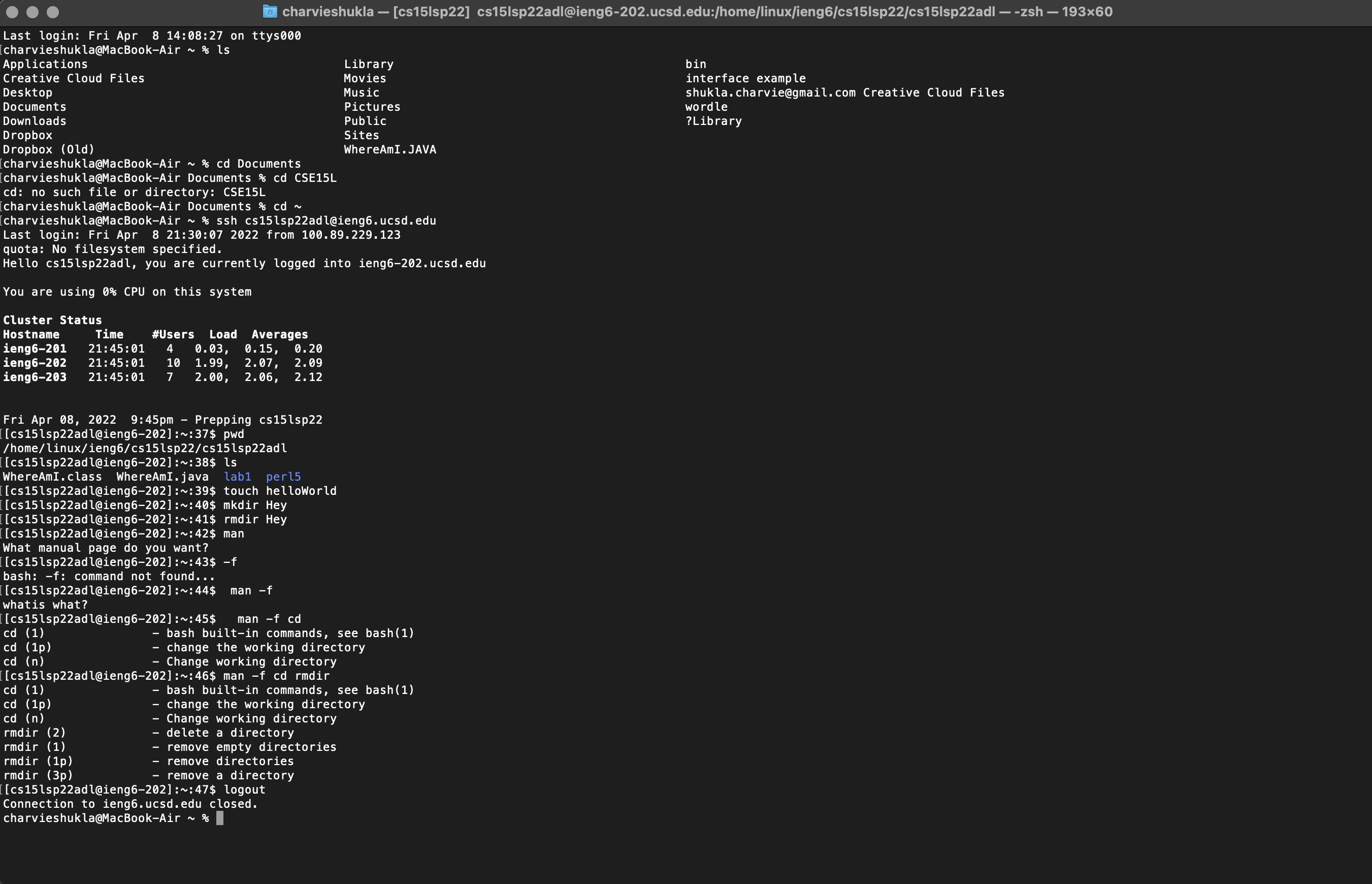
Moving Files with SCP
This part of the blog focuses on moving files online using scp.
The scp command is always run on the client, i.e. it will always run from your computer.
Step 1
On your computer, create any file that you want to move. For the sake of this tutorial, let’s call it WhereAmI.java.
We will be putting the following content in it:
class WhereAmI {
public static void main(String[] args) {
System.out.println(System.getProperty("os.name"));
System.out.println(System.getProperty("user.name"));
System.out.println(System.getProperty("user.home"));
System.out.println(System.getProperty("user.dir"));
}
}
Step 2
Using terminal on your own machine type:
$ javac WhereAmI.java (this would compile your code)
$ java WhereAmI (this would run your code)
Step 3
Then, from your cmputer, while remaining in the same directory from where you created and ran this file, type into the terminal:
scp WhereAmI.java cs15lsp22<abc>@ieng6.ucsd.edu:~/
Note: “abc” is where you need to put your personal user ID number
Step 4
Then the terminal would prompt you to enter your password.
Step 5
Log into ssh again, and use the command ls and you should be able to see WhereAmI.java. You sould be able to see something like this.
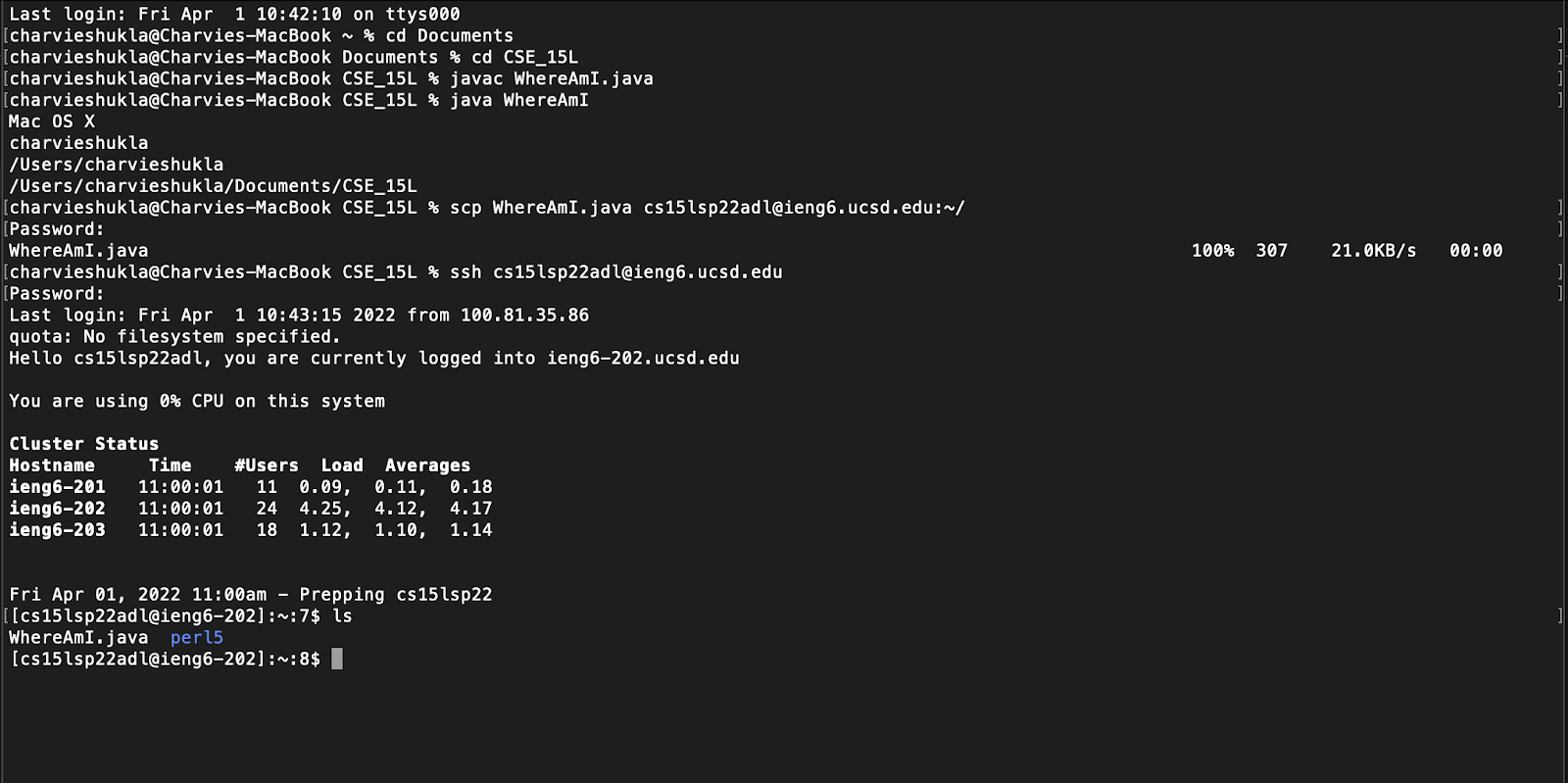
Step 6
Try and run you program again with javac and java. You are sunning that file on the ieng computer now!

Setting the SSH key
Why use ssh-keygen?
We use SSH keys so that we dont have to enter our password each time we log into the server. This can save you a lot of time.
The program ssh-keygen creates a files on your machine called the public key (found at a certian location on the server) and the private key (found at a certian location on the client).
The private key is stored in a file called id_rsa.
The public key is stored in a file called id_rsa.pub).
Then the ssh would replace your password with these files!
How to set up key-gen
Step 1 On your machine, go on terminal and enter:
$ ssh-keygen
Generating public/private rsa key pair. (This is creating the files which will be saved in the 2 locations mentioned above)
Step 2 Enter file in which to save the key. Therefore, you would need to type in:
(/Users/”user-name”/.ssh/id_rsa): /Users/”user-name”/.ssh/id_rsa
Note: In the command shown above, you would need to put your own computer username in place of “user-name”.
On pressing enter, you should see:
Enter passphrase (empty for no passphrase):
Make sure you just hit enter AND DO NOT USE A PASS PHRASE.
Step 3
Hit enter again when you see:
Enter same passphrase again:
Step 4
The terminal the tells you where your public and private keys are stored respectively:
Your identification has been saved in /Users/"user-name"/.ssh/id_rsa.
Your public key has been saved in /Users/"user-name"/.ssh/id_rsa.pub.
Ans it shows you your fingerprint!
The key fingerprint is:
SHA256:jZaZH6fI8E2I1D35hnvGeBePQ4ELOf2Ge+G0XknoXp0 "user-name" @" system" .local
Step 5 You also see cool art!
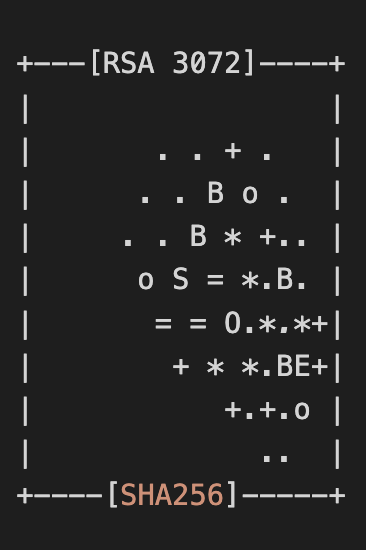
Step 6
Everytime you log in to ssh you should no longer require a passcode! Here is what it should look like
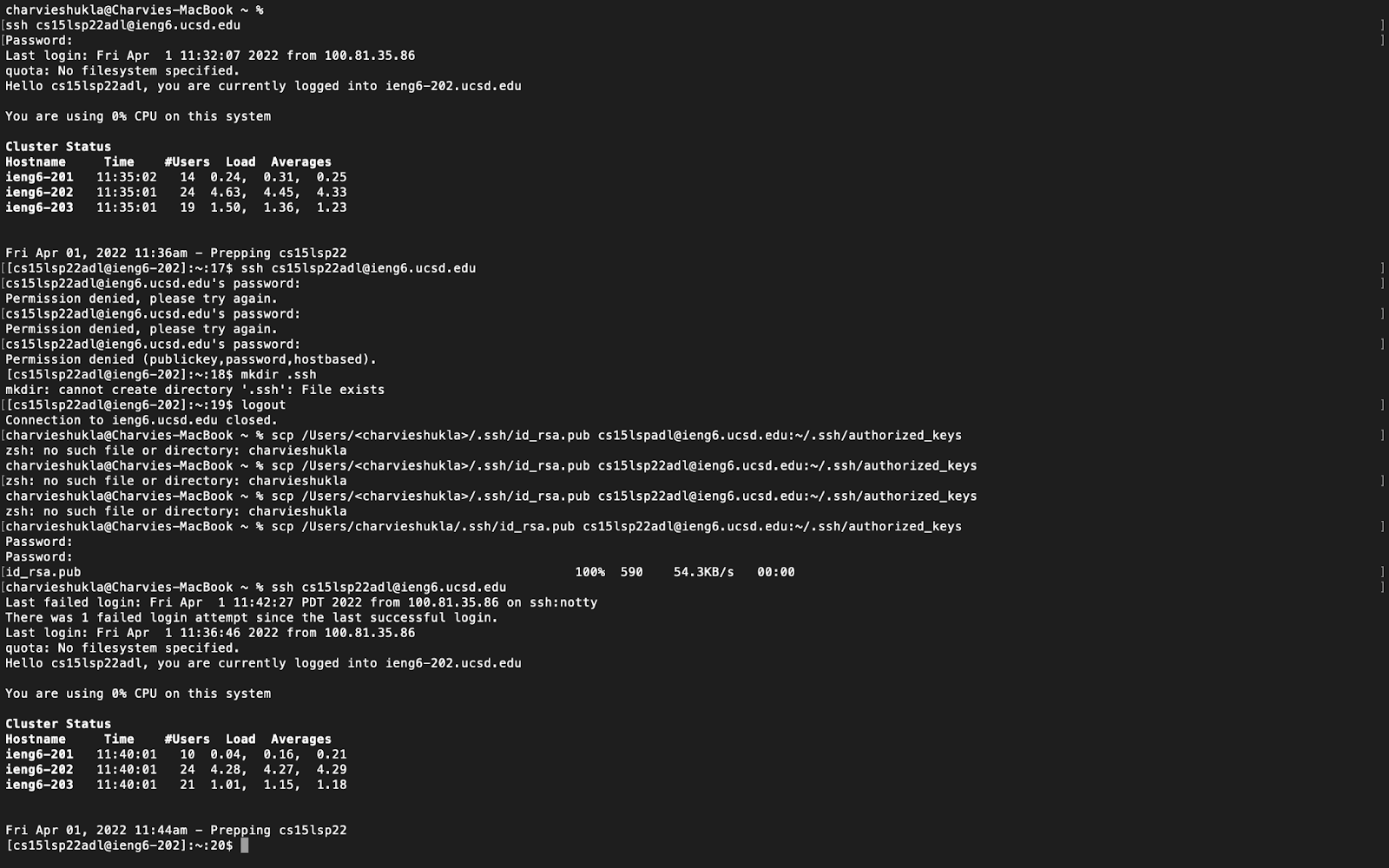
Step 8
Let’s try and see how much time this saves us!
- Open terminal
- Type
ssh <your account name>@ieng6.ucsd.edu - Hit enter
Your terminal screen should look similar.
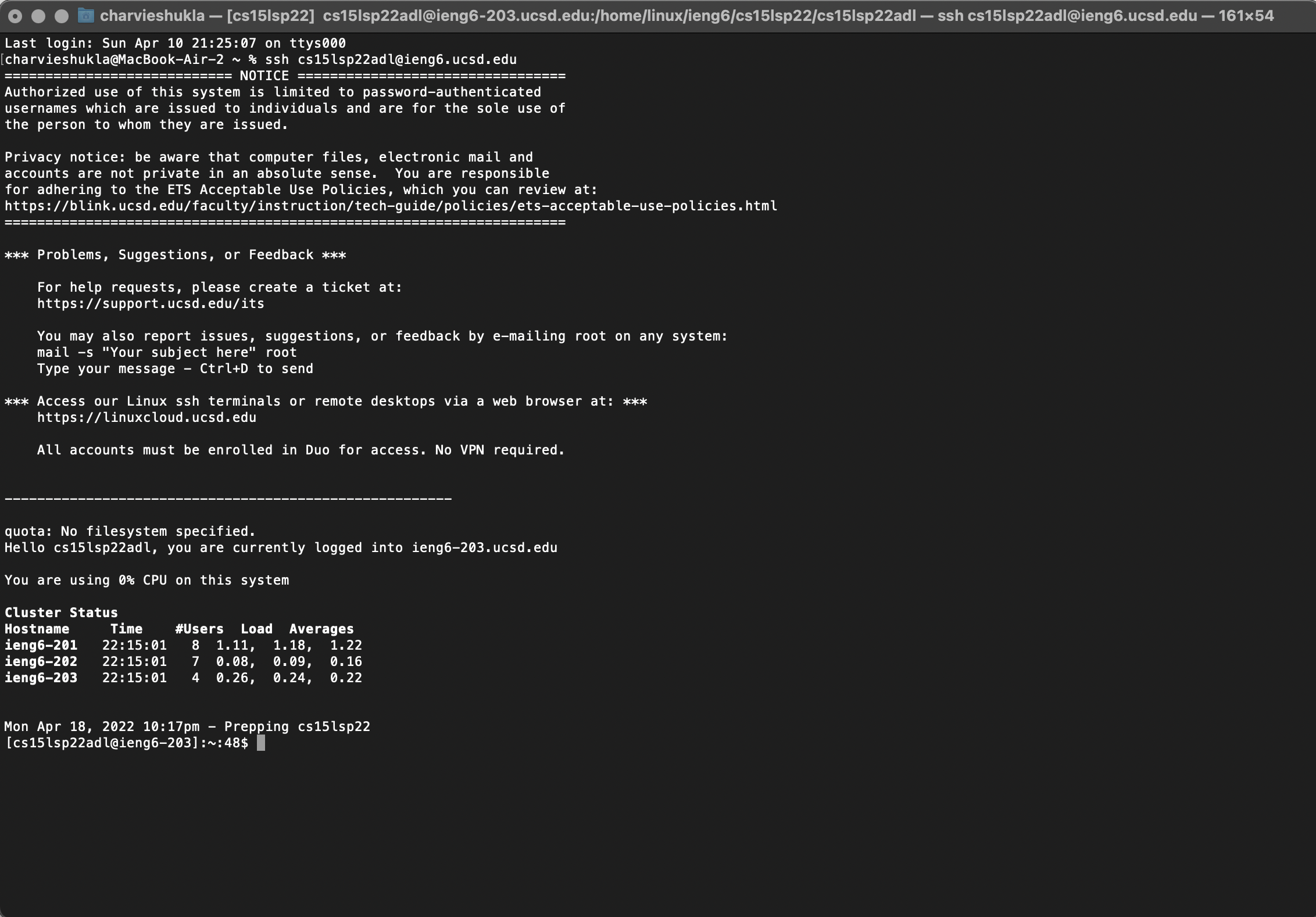
The point of using keygen was to save valuable developer time. You can now log into the remote server with less than 5 clicks!
Conclusion
With this, I conclude my Lab report 1. Thankyou for reading!!